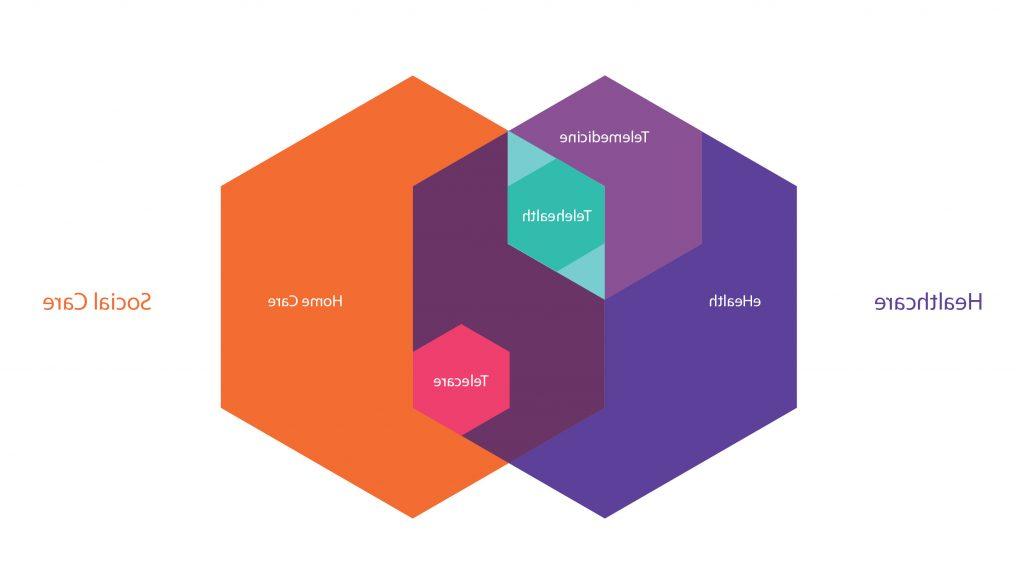Tomorrow’s 首页: A Salutogenic Role in Health Management
2017年,英国65岁以上人口占18%,85岁以上人口占2%. By 2050 nearly one in five people in developing countries will be over 60. 的需求, 挑战, 这一群体的期望将与前几代人有很大不同.
同时, chronic and lifestyle-related diseases are on the rise, 医疗保健服务正在努力跟上随之而来的日益增长的需求. 最近出版的 NHS长期计划 是否呼吁有必要采取预防行动,并将数字化护理纳入主流.
重点必须放在提供嵌入社区的“新面貌”服务上. This could range from assisted living, 自我保健, 远程, and tele-medicine within a single housing unit, to multiple units supported by social care services, 护士, 医生, 物理治疗师, 职业健康视察员, 精神科护士, 还有当地的药剂师.

数字 tools enable 医疗保健 services to be more personal and socially-minded. 点击这里查看大图.
技术和通信网络可以根据需要向人们提供临床远程保健和远程护理服务,从而帮助减轻负担过重的卫生保健系统. 亚马逊等公司, 谷歌, 和微软已经在我们的家庭中建立了他们的数字存在,不难想象,这种基础设施将通过远程医疗服务得到增强. With high definition video tele-医疗保健 systems, 医生和护士将能够在“虚拟病房”场景中与患者进行虚拟会诊或从医院远程进行会诊. 已经, 有远程心理保健等实时临床远程保健服务的成功实例, tele-audiology, 远程护理使用监测传感器来捕捉和传输生理数据.
This shift will also see a rise in 健康机理, 一种侧重于不仅在社区内支持人类健康和福祉的因素的办法, but also in the homes of tomorrow.
In order to best design the home care services of tomorrow, 衰老过程, 身体系统成熟度, 人类生理, 我们必须在理解相关医学问题的同时理解感觉受体, 发病率水平, 和健康需求. However, in order to address the health and wellbeing issues of today and tomorrow, 关于什么是“家”的传统观念将不得不被打破, 改造, 和重建. These new spaces must be flexible and agile to adapt to ‘ageless’, “代”, 以及“多发病”的情况.
人体工程学和人体测量学数据可以用来帮助设计一个有织物支撑的家, 和结束, 设备, and devices designed to accommodate the ageing body: its predicted postures, 运动, 重量, 大小, 属性, 认知能力. Design tools such as virtual reality, 增强现实, and sense-sensitive design will ensure successful outcomes.
Assistive design and technology interventions do not have be disruptive or expensive. 校正日温度, 颜色方面, 床边的调光器, 床上的倾向, 琥珀色的照明, 床/ WC取向, 亲生物设计, are all examples of low-barrier interventions. Alternative solutions are available as well, though they tend to be more costly. 这些例子包括, 医疗床头板, 感觉门, 身体司机, 机器人, thermal responsive shower heads and tiles, 聪明的地板, LED马桶座, 智能供氧, 夜间龙头, 领导的枕头, axo套装, 托托WC /净身, ODE发射器和Tomek配件.
While there are many 挑战 facing 医疗保健 systems, 当今快速的技术进步为我们提供了一种解决方案,可以提供新的创新形式的医疗保健服务,从而改善现有的服务. If we embrace today’s 挑战 and deconstruct, 重建, and reboot them with a focus on health and well-being, 未来的家园可以很好地缓解我们目前的医疗系统所面临的压力.

人体工程学和人体测量学数据可以帮助下一代老年人的年龄. 点击这里查看大图.
This article is based on the findings of the UK Government White Paper, 未来的社区, produced by the Agile Ageing Alliance in partnership with Tata Steel.
Richard Mazuch是一位建筑师和设计师,他从将整体想法转化为激进但实用的解决方案中获得了极大的满足感. 的权威 医疗保健, Richard provides profound insight into designing for global trends, 患者群体和临床提供——在整个建筑过程中告知关键决策. Richard has worked on 医疗保健 projects in Italy, 香港, 巴西, 阿曼, 阿联酋, 以及最近的澳大利亚. He has been elected as a World 体系结构 Jury member, 同时也是大学讲师/考官和国际会议的演讲者.
Richard has strong relations with key health bodies. He has worked extensively with the NHS contributing to Health Building Notes, 卫生技术备忘录, 以及他们的“治疗环境”网站特色,题为“轻微敏感设计和声音敏感设计”,使设计能够建立基于证据的医疗保健环境.
Richard is a founder and champion of IBI TH!NK. An advocate of evidence-based design, 理查德创造了对患者群体的心理和生理产生积极影响的创新. 感敏设计, 情感上的映射, Design Prescription和hPod是理查德成功开创的几个模型. 这使得他参与撰写了两份新的NHS“循证设计医疗环境”指南。.
理查德是一名产品设计师. In collaboration with manufacturers, 他创造了干预, 比如床荚, to support and improve patient care.
Richard经常与NHS和DOH专家工作组和参考小组合作,帮助制定新的医疗保健战略和指南. 最近,他参与撰写了三份关键的儿科指南文件,题为:“儿童和青少年的医院住宿hbn 23”, "为儿童和青少年提供友好的保健环境"和"为儿童和青少年提供心理健康学院".
Richard也是负责“产妇护理设施”HBN21的专家参考小组的积极成员和贡献者. 他是“儿童国家服务框架”的主要贡献者,该框架是NHS和卫生部的评估过程和建议文件,Richard在2003年为“创造更好的健康环境”的审计工具包做出了早期贡献和文件审查.
在教育, 理查德正在翻译他在儿科保健方面的工作,以使教师和学生受益. Working alongside University partners, he is pioneering the development of an ‘optimal learning environment’, 改善的动机, behaviour and concentration amongst pupils, especially those with special educational needs.








